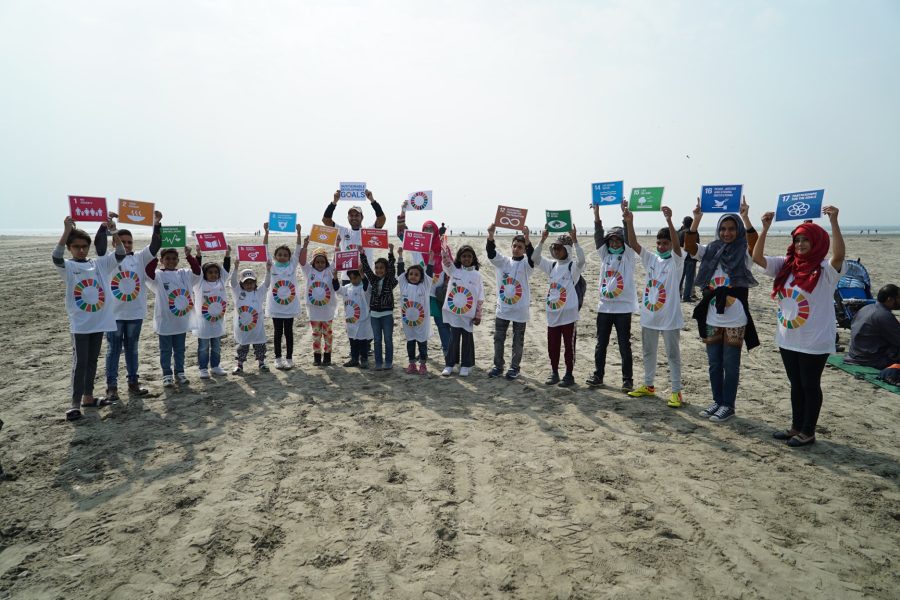In the first phase of the SDGs Programme, an effort was made to use data evidence to inform policy and integrate Agenda 2030 in Government Institutions in Sindh. However, significant data gaps around SDG indicators were identified during the initial phase of SDG implementation. Only 33% of the data was available for provincially applicable SDG indicators in Sindh. National and Provincial Government Surveys such as PSLM, MICS, and PDHS were not aligned with meta-data language. SDGs-linked data tagging, collection, and analysis were institutionalized to strengthen data reporting. Different evidence-based products and reports were prepared to inform policy formulation decisions on SDG mainstreaming.
Since 2018, the Sindh Bureau of Statistics has made SDG reporting a regular practice in Sindh. This has significantly increased SDG reporting from 33% in 2018 to 61% in 2024. One of the key actions taken in this regard was the addition of specific indicators, such as 32 SDG, in the Multi-Indicator Cluster Survey (MICS). The survey has provided data on essential indicators, including multidimensional poverty, stunting, and education completion rates. The data has also been used to create Sindh District Profiles for all 28 districts and has helped formulate 17 SDG-aligned headquarters town plans.
In 2018-19, the Provincial SDGs framework was developed as a road map for mainstreaming SDGs in Sindh. The framework was guided by data-driven UNDP Multilayered Nest Methodology, which used criteria such as Width (Number of populations affected by a target), Dispersion (Difference between best and worst performing district), Level of Urgency, and Multiplier. The prioritization matrix used data available for each SDG target to rate 174 provincial applicable targets in the ‘high,’ ‘medium,’ and ‘low’ categories. The data evidence generated through the prioritization tool further guides departments to align their plans and resources with prioritized SDGs. Examples include aligning the Sindh Poverty Reduction Strategy and Sindh Education Sector Plan (2019-2024) with data evidence from the provincial SDGs framework for Sindh.
To inform policy decisions on resource allocation towards SDGs, costing models for SDG 2: Zero Hunger, SDG 6: Clean Water and Sanitation, and SDG 7: Affordable and Clean Energy were developed. In Sindh, over 40% of the population faces moderate to severe food security, and one out of two children under five face stunted growth. The costing model for SDG 2: Zero Hunger estimated that Rs. 296.8 billion is required to eliminate food insecurity and stunt growth. The model also developed costed intervention plans presented to Government policymakers, academia, and Sindh Accelerated Action Plan for Reducing Stunting program. In SDG 6 costing study, it was estimated that Rs. 114 billion is required per year to achieve SDG 6.1 and 6.2 targets. The findings were adopted as part of the Government of Sindh’s efforts to increase allocation towards safely managed drinking water and sanitation.
The SDGs Expenditure Tracking System has been developed in Sindh, with over 10,000 cost centers under development. The recurrent budget has been mapped and tagged against SDGs at the target and Indicator levels in the SAP-based Government Financial Management Information System (GFMIS). This exercise aims to track individual expenditure heads via disaggregated budget codes. Based on successful uptake, SDGs-related expenditure reports are generated. In the future, an Expenditure tracking dashboard will be developed to guide policymakers on district-level allocation decisions based on SDG indicators’ performance trends.
In the Global SDGs report (2023), 12 out of 17 SDGs in Pakistan are lagging. Analysis of SDG performance in Sindh showcases that SDG 12: Sustainable Consumption and Production, SDG 13: Climate in Action, SDG 14: Life under Water, and SDG 15: Life on Land require greater attention as data and enabling policy frameworks are limited on these goals.
The situation is further exacerbated by the recent Flood (2022) and the effects of COVID-19, in which the poverty level in Sindh has increased with a broader effect on social, economic, and environmental well-being. As part of UNDP’s digital transformation strategy (2022-2025) and the Sindh government’s vision to develop integrated data architecture in Sindh, a digital portal for SDGs reporting and tracking has been formulated in Sindh. The portal aims to improve data reporting on SDGs for weak-performing sectors to guide the formulation of enabling policy frameworks. The portal will also guide departments in monitoring and validating SDG data while increasing institutional capacity so that departments can set milestones based on indicator risks.



